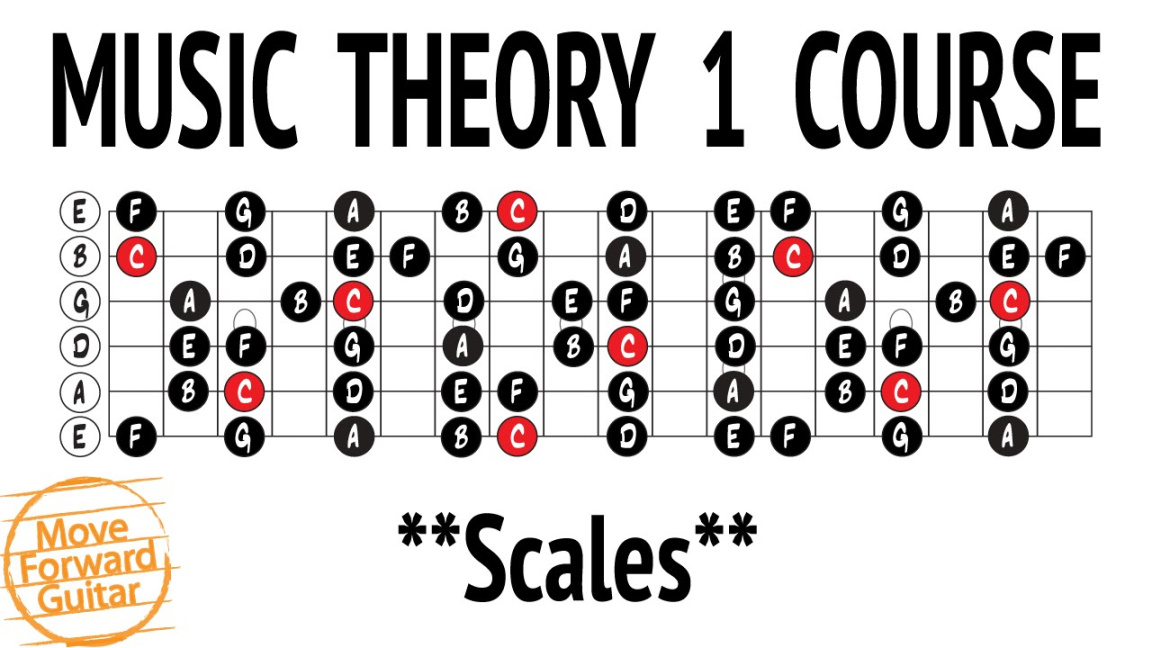Guitar Music Theory: No Fear, Just Fun (and a Bit of Brain Power)
So, you’re a guitarist. You strum some Chords, maybe even noodle a bit, and you think, “Yeah, I’m making music.” But then you hear about “music theory,” and suddenly, it sounds like you need a PhD to play a decent riff. Fear not, my friend! Guitar music theory isn’t some mystical, unattainable realm. It’s just a way to understand what you’re already doing, but better.
The Basics: Notes and Intervals
Let’s start with the basics. You know the notes: A, B, C, D, E, F, G. And you know they repeat. But what’s the space between them? That’s where intervals come in. Think of intervals as the distance between two notes. A half step is the smallest interval, like going from E to F, or B to C. A whole step is two half steps, like going from C to D. Understanding these intervals is crucial because they’re the building blocks of everything else.
Scales: The Melodic Backbone
Scales are like musical recipes. They’re a sequence of notes arranged in a specific pattern of whole and half steps. The most common scale is the major scale, which sounds happy and bright. Its pattern is whole, whole, half, whole, whole, whole, half. If you play that pattern starting on C, you get the C major scale: C, D, E, F, G, A, B, C.

Then there’s the minor scale, which sounds sadder or darker. The natural minor scale’s pattern is whole, half, whole, whole, half, whole, whole. Knowing these scales helps you create melodies and understand why certain notes sound good together.
Chords: Harmony in Action
Chords are when you play multiple notes at the same time. The most basic chords are triads, which are made up of three notes. A major triad, like C major, consists of the root (C), the major third (E), and the perfect fifth (G). A minor triad, like C minor, has the root (C), the minor third (Eb), and the perfect fifth (G).
Understanding chord construction lets you build your own chords and figure out why certain chords sound good in a progression. Chord progressions are just a series of chords played one after another, creating a harmonic backdrop for your melodies.
The Circle of Fifths: Your Musical Compass
The circle of fifths is a visual representation of the relationships between the 12 major and minor keys. It’s arranged in fifths, meaning each key is five notes away from the next. It helps you understand key signatures, chord progressions, and how different keys relate to each other. For instance, C major has no sharps or flats, while G major has one sharp (F#). Moving clockwise, you add sharps, and moving counterclockwise, you add flats.
Key Signatures: Navigating the Sharps and Flats
Key signatures tell you which notes are consistently sharp or flat in a particular key. For example, the key of G major has one sharp, F#. This means every time you play an F in a song in G major, it’s an F#. Understanding key signatures prevents you from playing wrong notes and keeps your music sounding in tune.
Modes: Adding Flavor to Your Playing
Modes are variations of the major scale, each with its own unique sound. There are seven modes: Ionian (major), Dorian, Phrygian, Lydian, Mixolydian, Aeolian (natural minor), and Locrian. Each mode has a different pattern of whole and half steps, giving it a distinct character. For instance, Dorian sounds slightly melancholic, while Lydian sounds bright and ethereal.
Chord Progressions: Building Musical Stories
Chord progressions are the backbone of most songs. Common progressions like I-IV-V (in C major, that’s C, F, G) or I-vi-IV-V (C, Am, F, G) create familiar and satisfying sounds. Understanding chord progressions allows you to write your own songs and improvise over existing ones.
Improvisation: Making it Your Own
Improvisation is the art of creating melodies and solos on the fly. Knowing your scales, chords, and modes gives you the tools to improvise effectively. Start by playing scales over chord progressions, focusing on the notes that fit the chords. Experiment with different rhythms and phrasing to develop your own style.
Ear Training: Listening is Key
Ear training is the process of developing your ability to recognize notes, intervals, chords, and scales by ear. It’s a crucial skill for any musician, as it allows you to learn songs by ear, transcribe music, and communicate with other musicians. Start by trying to identify simple intervals and chords, and gradually work your way up to more complex musical elements.
Conclusion
Guitar music theory might seem daunting at first, but it’s really just a set of tools to help you understand and create music. By learning the basics of notes, intervals, scales, chords, and key signatures, you can unlock a whole new world of musical possibilities. Don’t be afraid to experiment and apply what you learn to your own playing. Remember, music theory is meant to enhance your creativity, not stifle it. Take it step by step, and soon, you’ll be navigating the fretboard with confidence and writing music that truly reflects your own unique voice.

